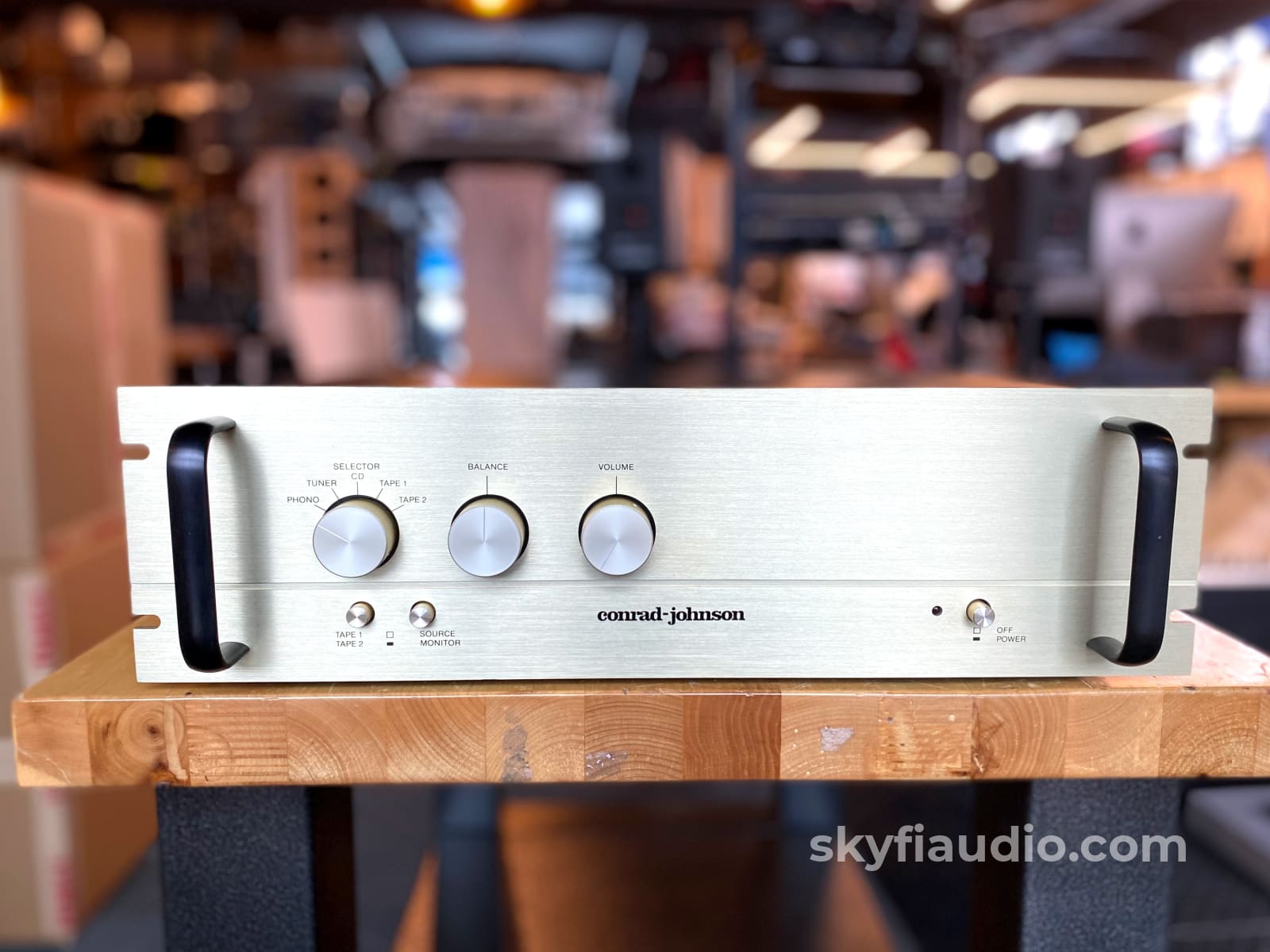
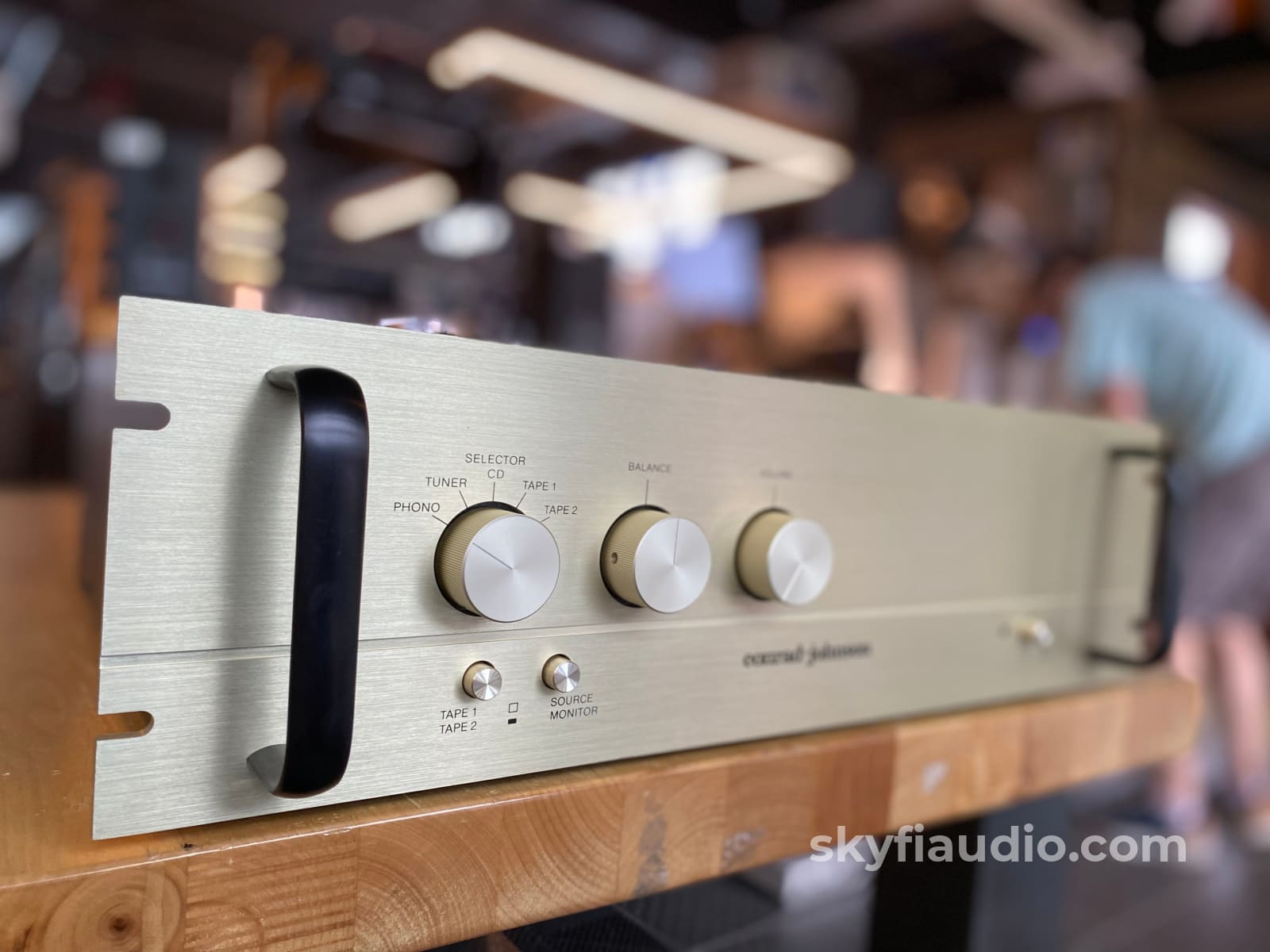
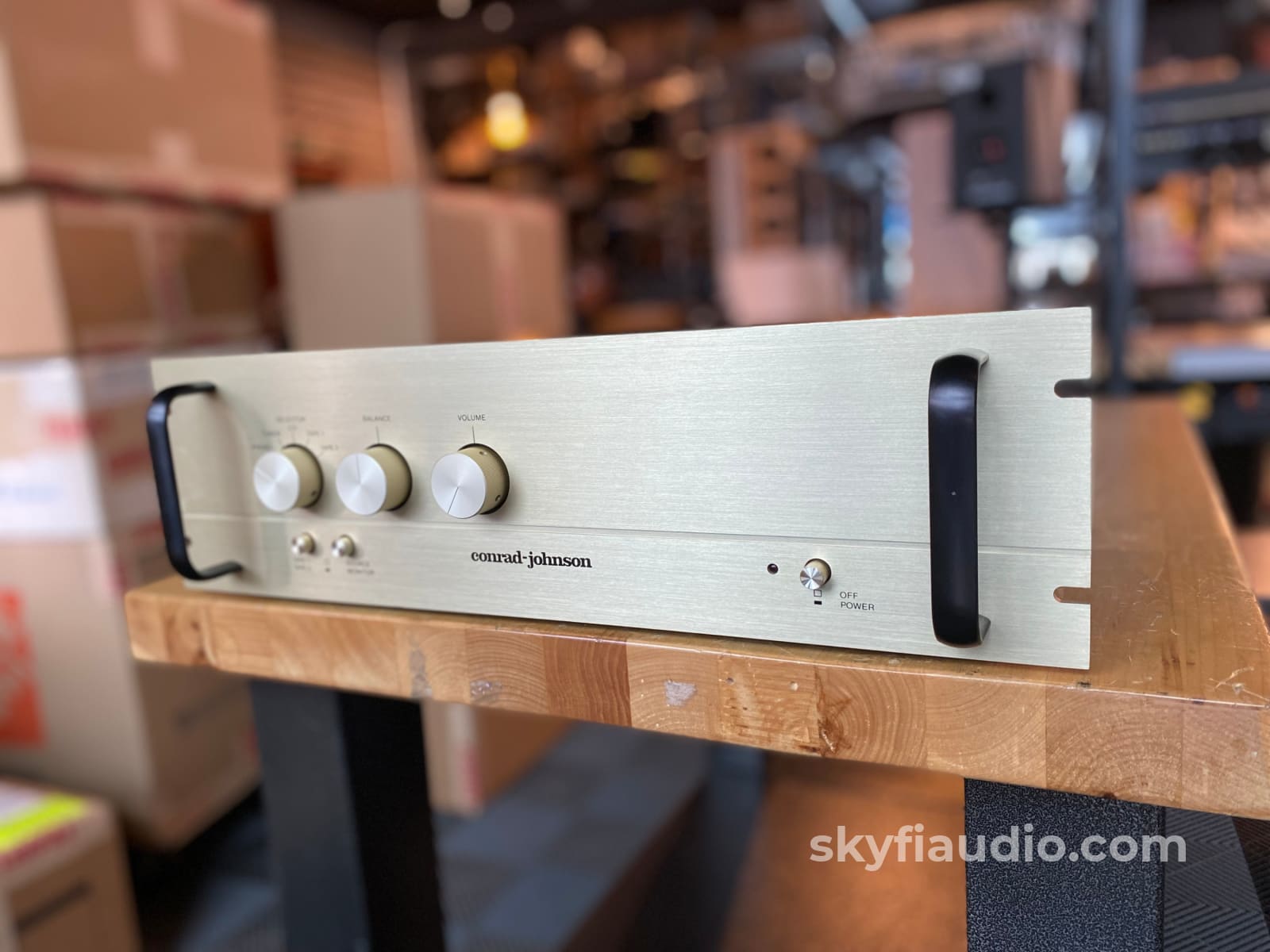
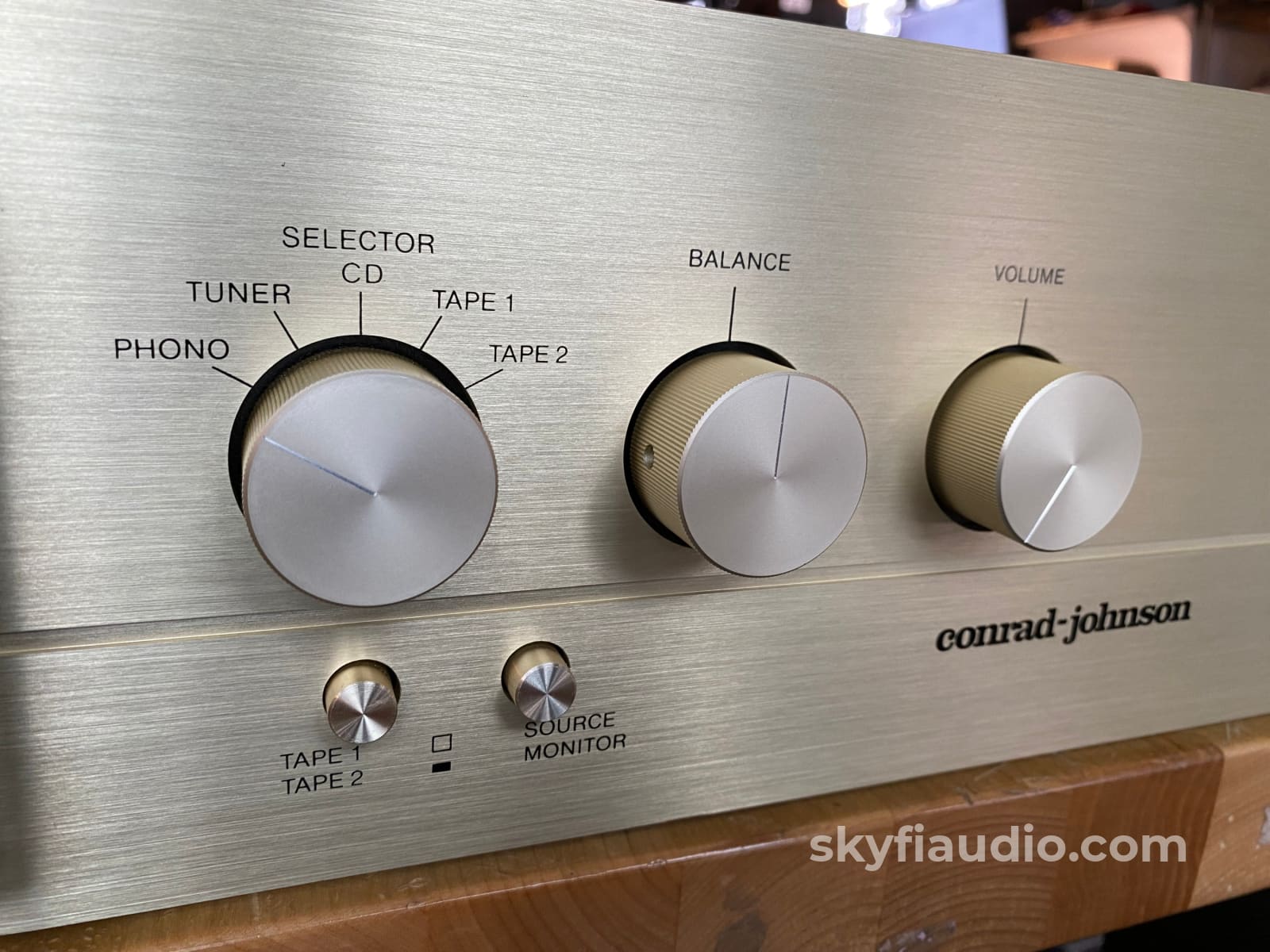
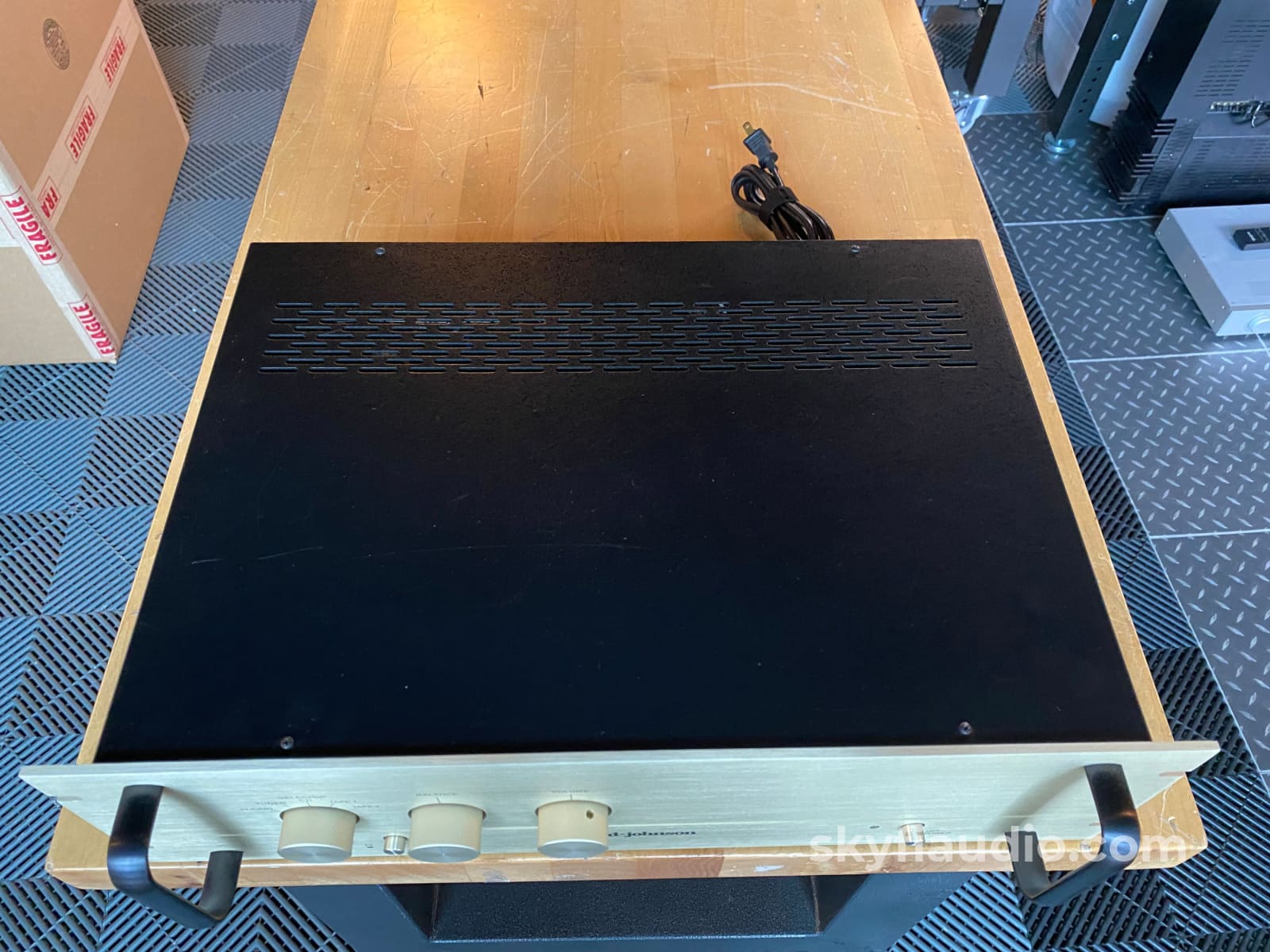
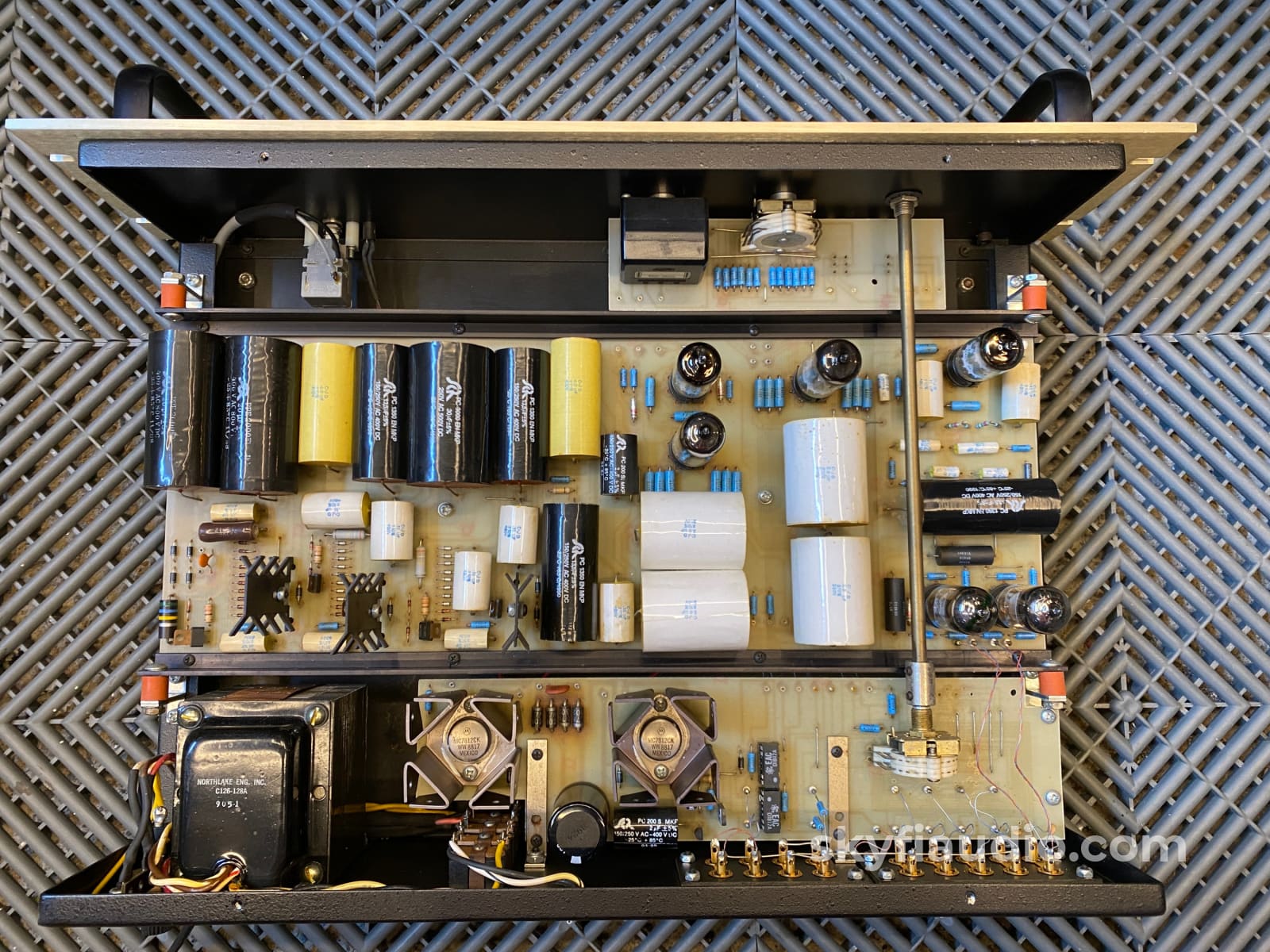
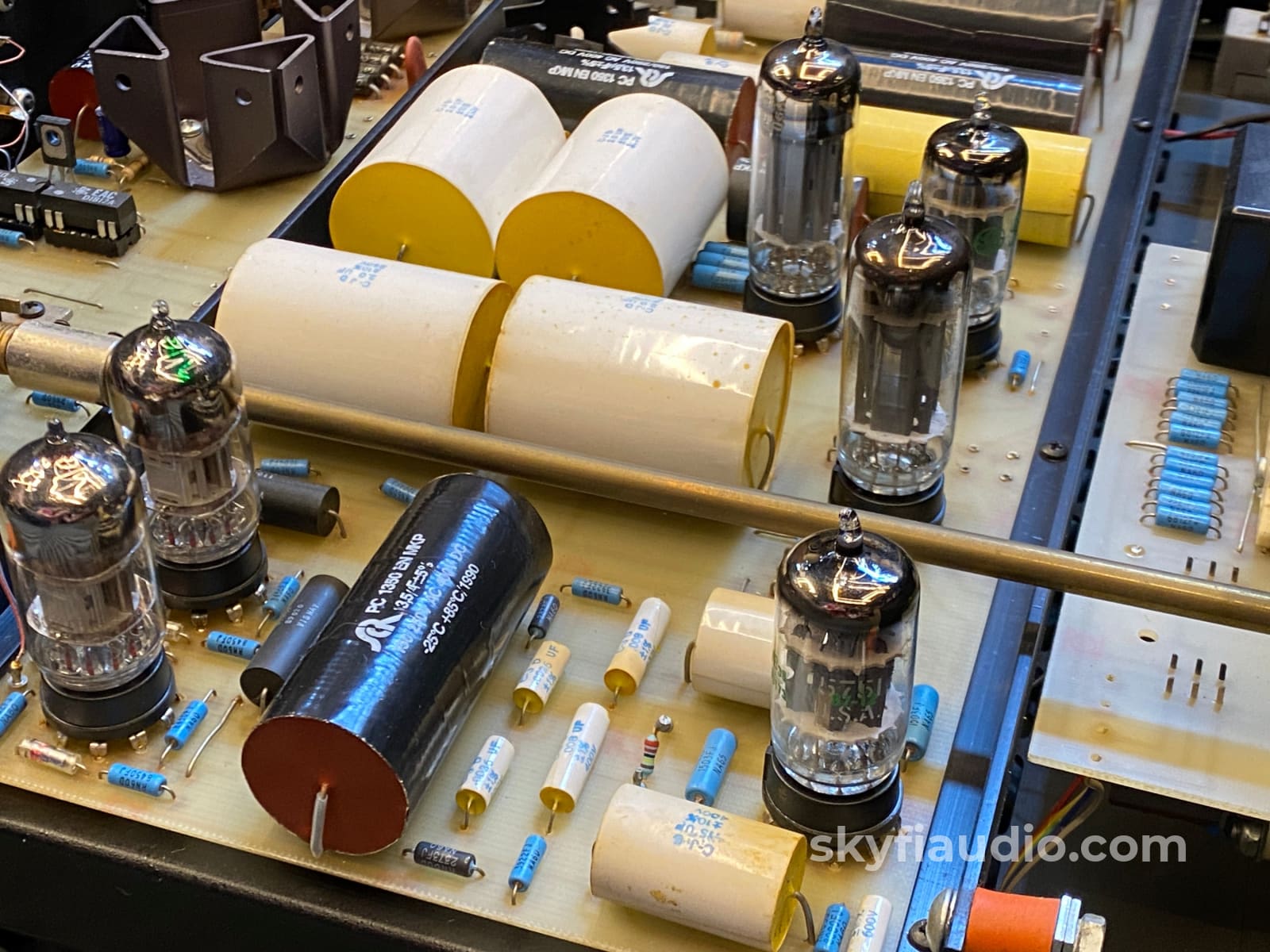
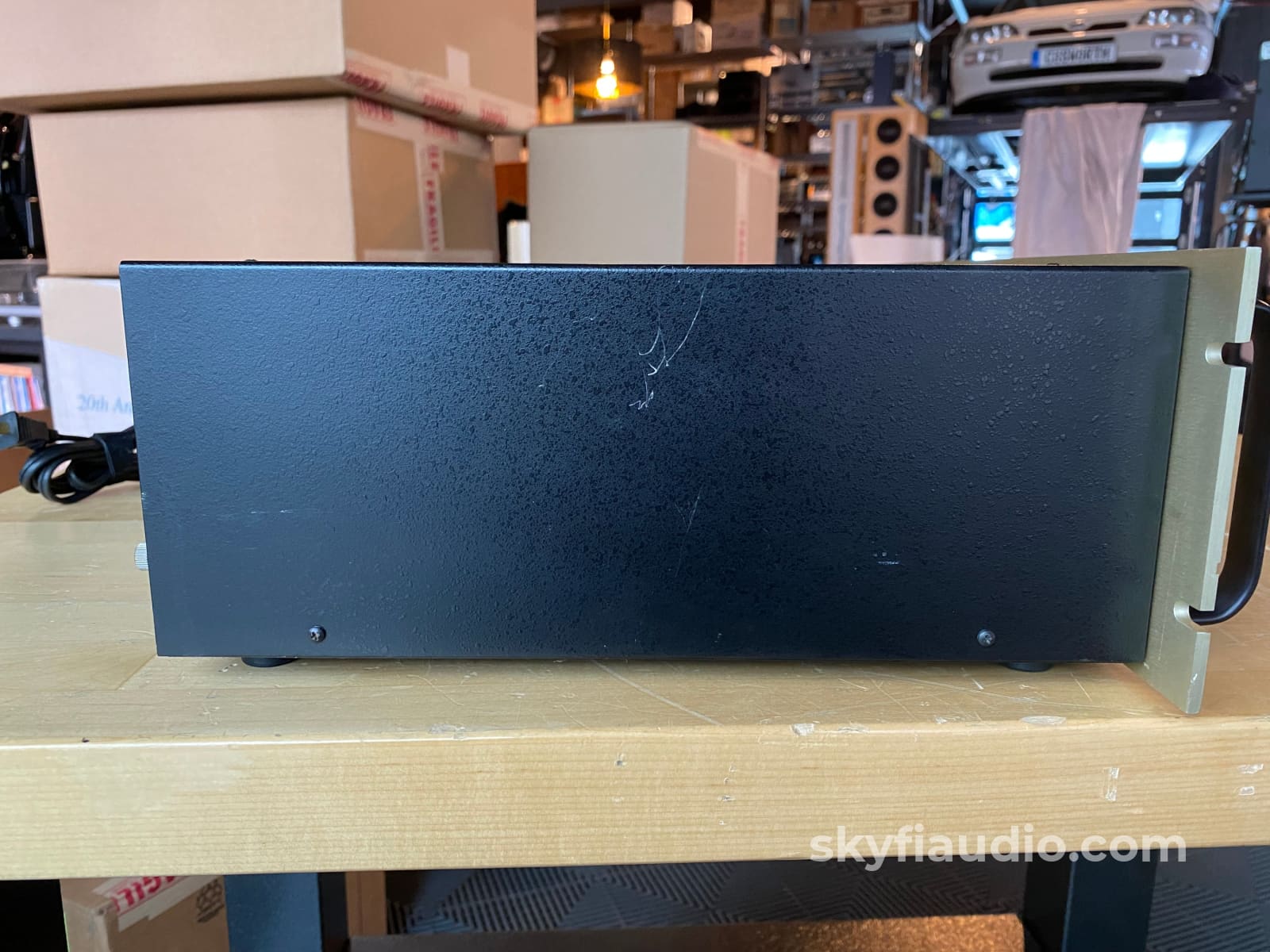
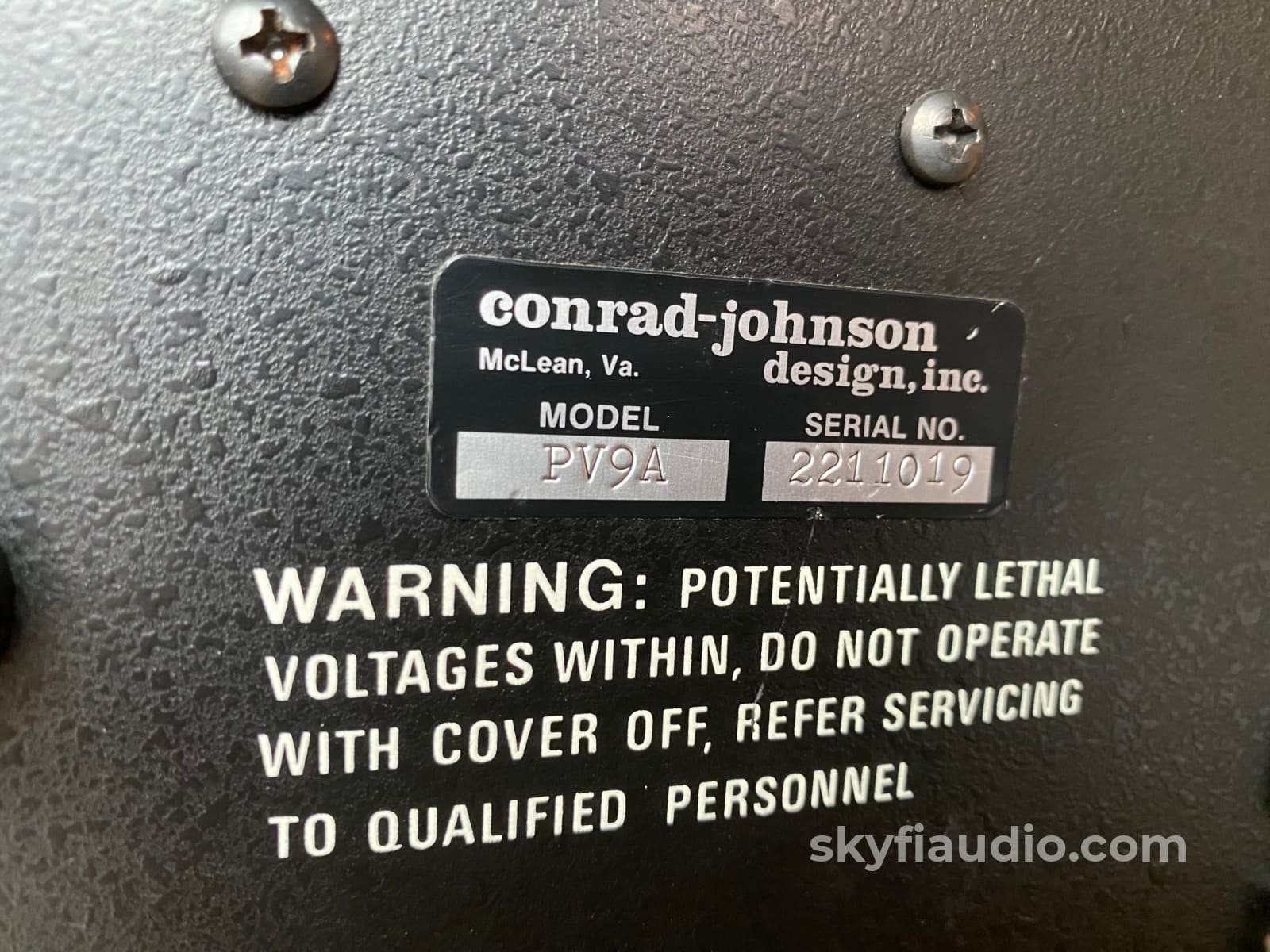
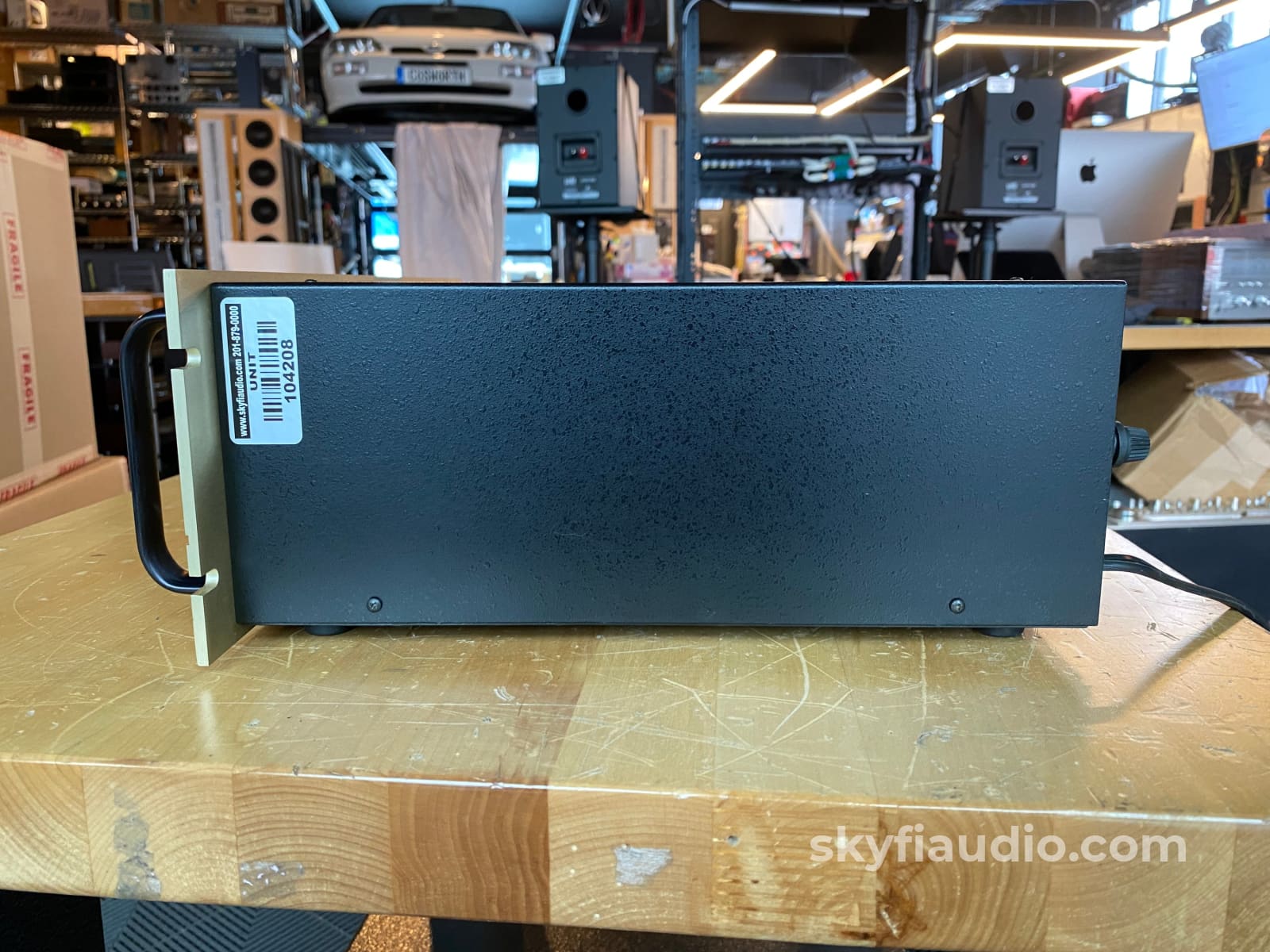
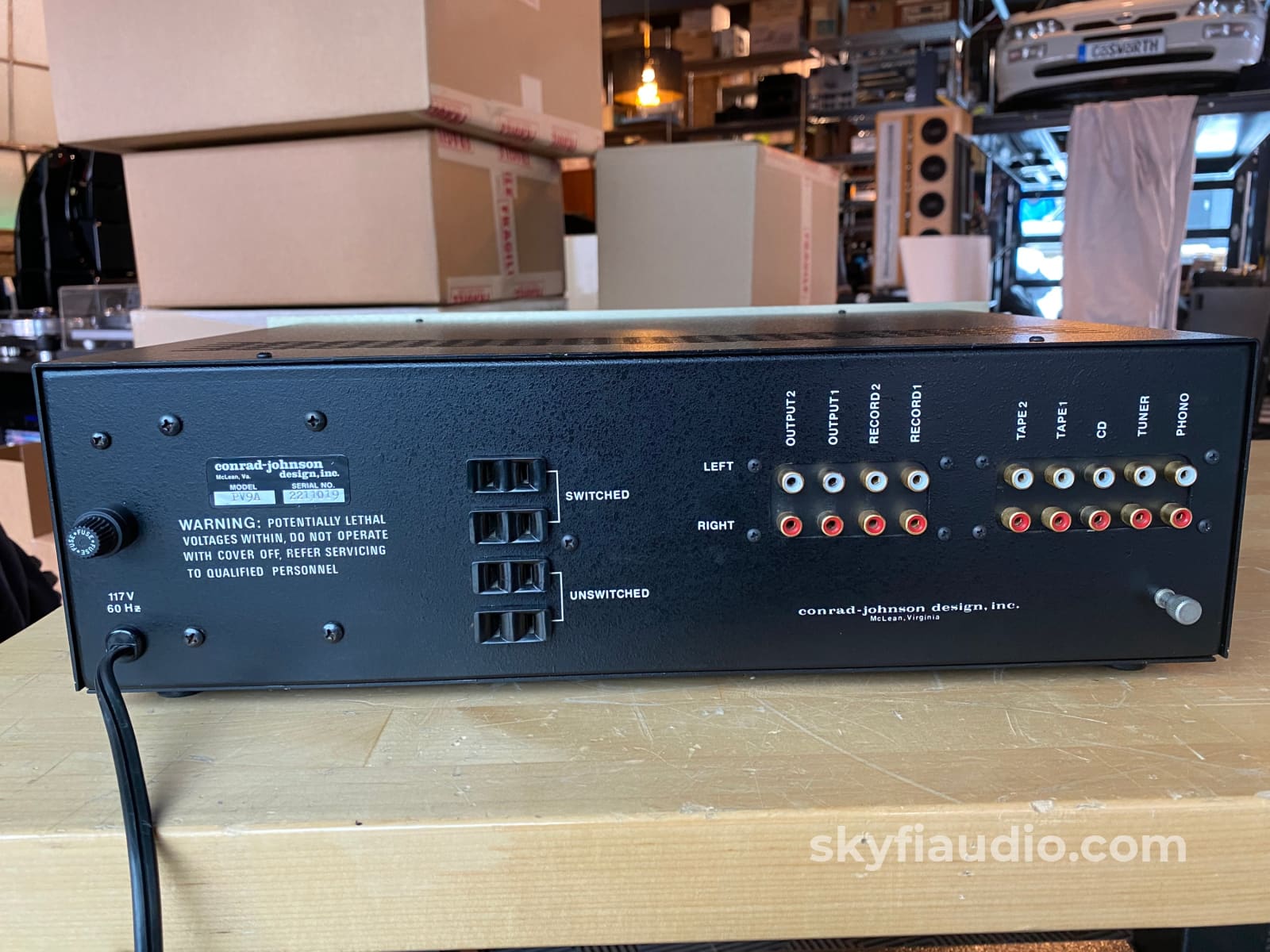

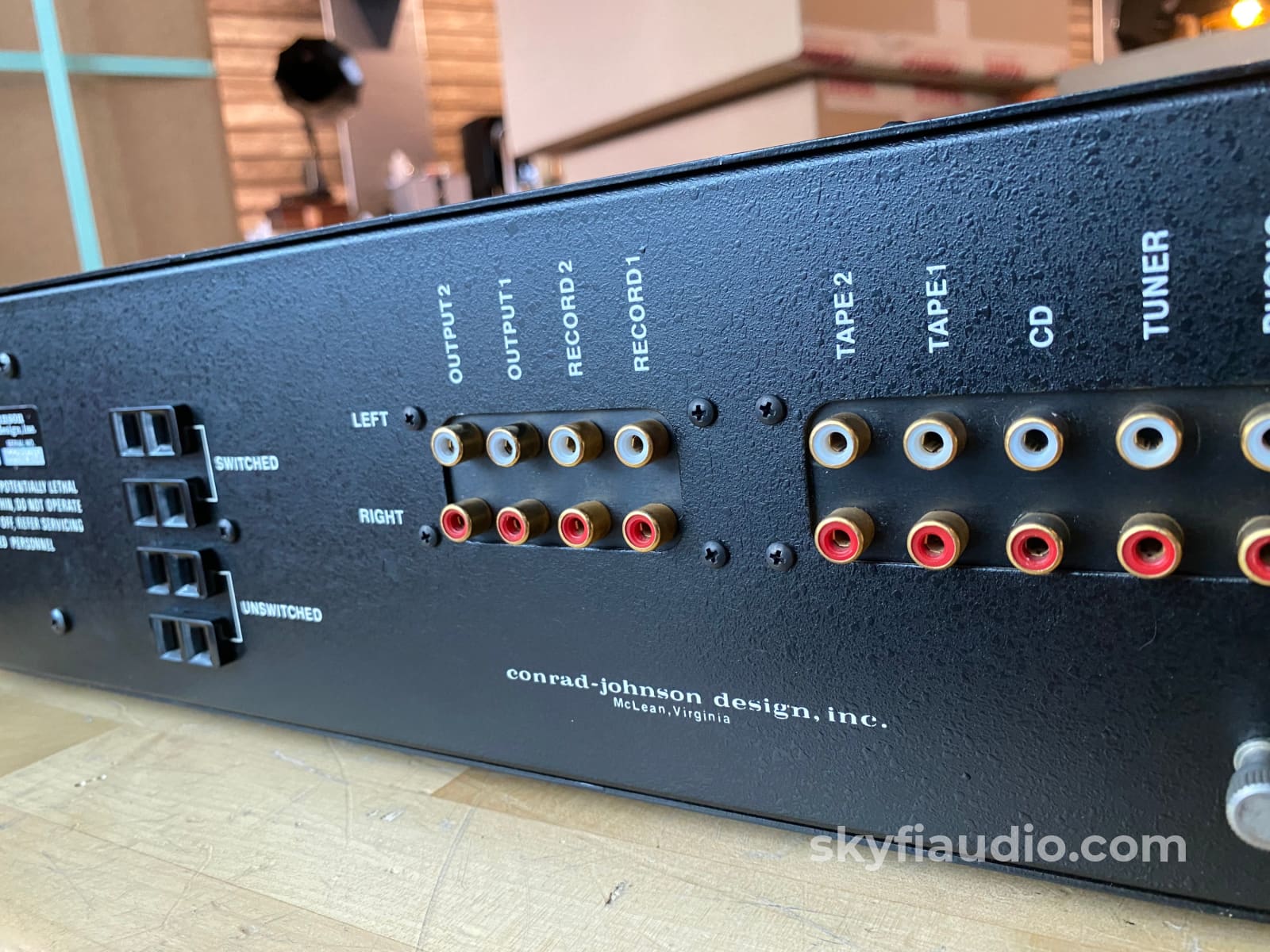
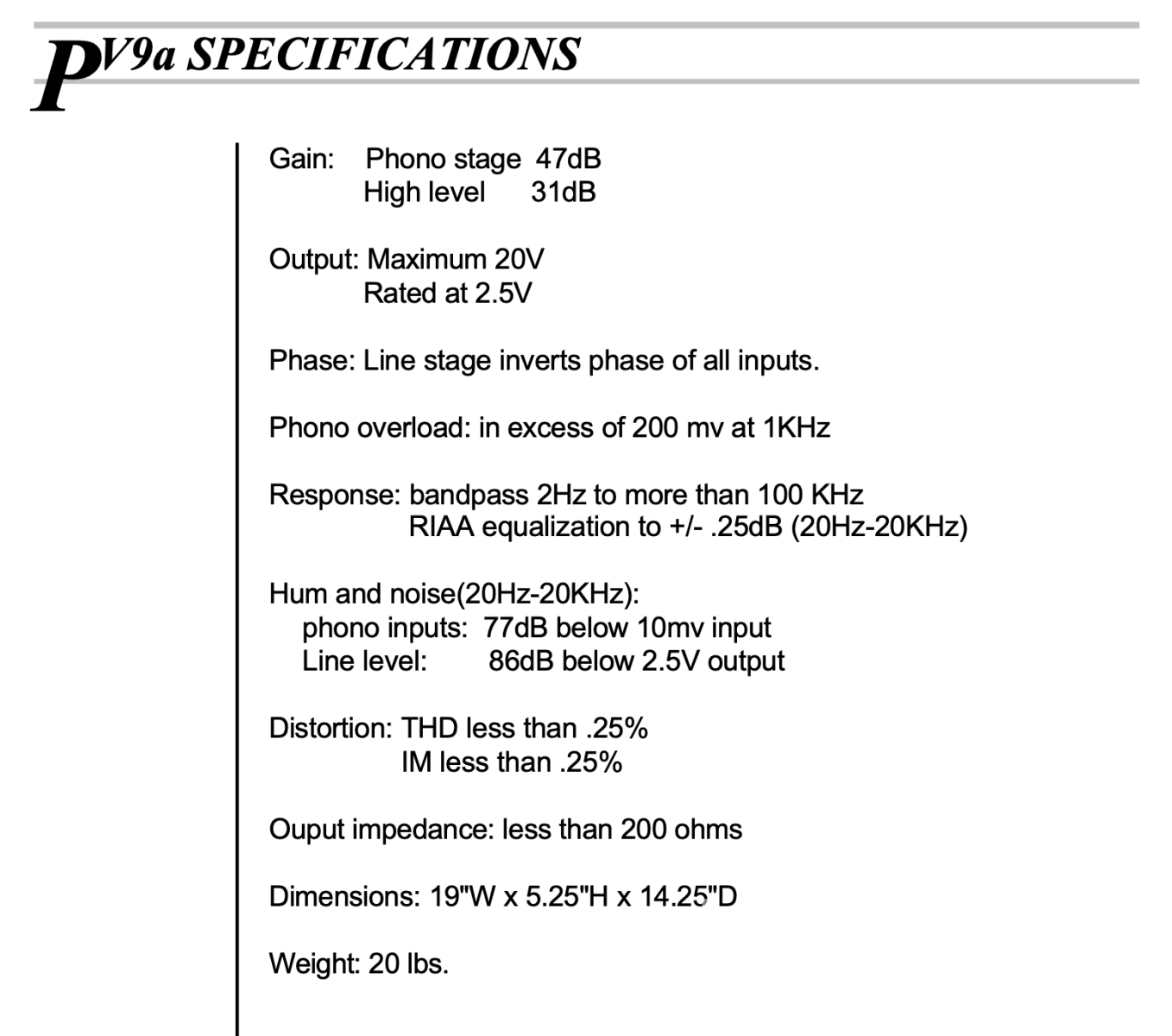
Conrad Johnson PV9A Tube Preamplifier with Phono
Free Shipping on Most Electronics - Excludes Speakers and Items Requiring Freight - Contiguous U.S. Only
Pickup currently unavailable at SkyFi 479

Conrad Johnson PV9A Tube Preamplifier with Phono
SkyFi 479
479 South Broad Street
Glen Rock NJ 07452
United States
General:
Beautifully built PV9A from Conrad Johnson.
If you run a turntable and are looking for a tube preamp, this should be on your short list. If you're not running a turntable you can opt for one of the more affordable line stage preamps from CJ without a phono preamp.
Construction is to a very high standard utilizing non-magnetic aluminum throughout the entire cabinet. Precision metal oxide resistors and audio-grade film caps are used on most of the circuitry, or at least the important bits.
And great attention was paid to making sure the tubes are mechanically insulated to eliminate microphony.
*Note this preamp will ship with its transport locking screws in place which are used for safe travels in shipping, much like a more delicate CD player. All of these screws will need to be removed upon installation to benefit fully from the design.
Technical Notes:
• This preamp has only one electrolytic capacitor. All remaining power supply caps are audio-grade film caps.
• The entire preamp and regulated power supply sub-chassis is suspended from the main chassis by rubber standoffs, similar in design to the classic Marantz Model 7 and McIntosh C22 preamps form the 1960's.
Tube Notes:
• Phono Stage - Matched/Balanced Sovtek 12AX7 tubes
• Remaining tubes are strong balanced Vintage American 5751 and 6CG7
Cosmetic condition is exemplary for a piece of the vintage showing slight signs of use. Functionally it is working as it should and was fully tested in our lab.
Brand Background:
In the mid-1970s, two economists—friends and serious audiophiles—Dr. William Conrad and Dr. Lewis Johnson—were highly dissatisfied with the commercially available equipment of the time and were also perplexed and challenged by the readily apparent sonic differences among components in their own systems. What made these two classic tube systems sound so different? Could the virtues of each be somehow combined? Not content to merely speculate on such issues, Conrad and Johnson decided to systematically investigate by developing and refining a vacuum-tube preamplifier.
The resulting conrad-johnson preamplifier was immediately recognized as a state of the art contender and catapulted Conrad and Johnson into the audio industry.
The most important legacy of conrad-johnson design’s beginnings is the basic methodology which took shape in the course of the development of that first preamplifier.
This methodology has enabled conrad-johnson to develop new products which have routinely been ranked among the most musically satisfying. Few other manufacturers have so consistently received such high praise for their products.
Ownership:
Single Owner
Connections:
RCA Inputs and outputs, captive power cord, switched and unswitched convenience outlets.
General Sound:
Smooth, uncolored, undistorted natural and clean
Cosmetic Condition:
7 - Some Wear and Light Scratches
https://skyfiaudio.com/pages/our-rating-scale
Working Condition:
Working perfectly and tested in our lab and listening room.
Included:
Just the unit and power cord
Packing:
Will be packed using our highly developed in-house process and custom packing materials.Dimensions:
19" W by 14.25" D by 5.25"
Weight:
20 lbs.
Approximate Age:
1990
Reviews:
https://www.stereophile.com/content/conrad-johnson-pv9-preamplifier-specifications
Manual:
https://conradjohnson.com/owners-manuals/pv9aman.pdf
Specs:
Please see our last photo or the linked manual above.
Recommended Cables:
Kimber Kable - RCA Interconnects - Better
Kimber Kable - RCA Interconnects - Best
Kimber Kable - Phono Interconnects - Better
Kimber Kable - Flagship Phono Interconnects - Best
Testing Process:
We start with a visual inspection of all internal components to make sure that there are no signs of heat stress or damage. Capacitors are checked for telltale signs of predictive failure including bulging, shrunken wrappers, or physical leakage. We also inspect the PCB’s for discoloration from resistors or transistors that may have been running hot. On vintage units we often spot check select capacitors for value and ESR.
When we first power on a preamplifier we connect its RCA output to a Sencore PA81 Power Analyzer which simulates real world loading conditions and gives us an oscilloscope interface. The first order of business is checking that the volume control works smoothly throughout its entire range with acceptable channel balance. This is accomplished by feeding a 1KHz sine wave into one of the preamp’s line level inputs while monitoring the preamp’s output on an oscilloscope. We then switch to a 1KHz square wave to test the tone controls, loudness function, and filters where applicable. During this step we are watching for equal alteration of the test signal by both channels. This also helps us identify dirty controls that will need treatment. Once the basic line stage functions are verified, we test each input individually. This is especially important for devices that use relays to select their sources. If the preamp is equipped with a phono stage we test that as well. We use an inverse RIAA filter which allows us to feed a reference test signal into the phono input with the proper RIAA equalization and level. A square wave or sine sweep is used to verify that the device’s phono stage is faithfully reproducing the RIAA curve. If the preamp under test has balanced inputs and/or outputs these are tested as well.
We finish up our bench testing with a listening test with our bench amplifier and reference speakers. During this test we check for hum or hiss that may not have shown up in earlier testing. We also check that all of the tone controls and filters perform as expected. If the preamplifier has remote control functions these are also tested. Preamps with tube circuits or complicated power supply topologies are connected at our long term test rig for extended stress testing under real world conditions.
Choose options














